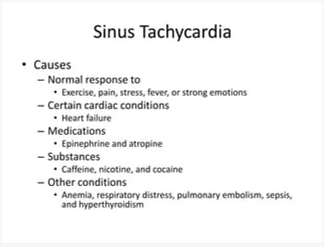The nurse is caring for a client in a hypertensive emergency. Which action will be included in the plan of care during hypertensive emergency who is receiving nifedipine?
Organize nursing activities so that the patient has 8 hours of undisturbed sleep at night.
Use an automated noninvasive blood pressure machine to obtain frequent measurements.
Keep the hypertensive emergency NPO to prevent aspiration caused by nausea and possible vomiting.
Assist the patient up in the chair for meals to avoid complications associated with immobility.
The Correct Answer is B
The action that will be included in the plan of care for a client in a hypertensive emergency receiving nifedipine is to use an automated noninvasive blood pressure machine to obtain frequent measurements.
In a hypertensive emergency, the client's blood pressure is severely elevated, requiring immediate treatment and close monitoring. Nifedipine is a calcium channel blocker commonly used to lower blood pressure in such situations. Continuous blood pressure monitoring is crucial to assess the effectiveness of the medication and ensure that the blood pressure is brought under control safely.
Organize nursing activities so that the patient has 8 hours of undisturbed sleep at night: While providing a conducive environment for sleep is important for overall patient well-being, in a hypertensive emergency, the priority is to manage and monitor the blood pressure. Sleep hygiene may not be the immediate concern in this situation.
Keep the hypertensive emergency NPO to prevent aspiration caused by nausea and possible vomiting: NPO (nothing by mouth) orders are typically implemented when there is a risk of aspiration or pending a procedure requiring anesthesia. In a hypertensive emergency, the focus is on managing blood pressure and ensuring appropriate hydration and nutrition as needed. NPO status may not be necessary unless specifically indicated for the individual patient.
Assist the patient up in the chair for meals to avoid complications associated with immobility: While mobilization and preventing complications associated with immobility are important aspects of care, in a hypertensive emergency, the primary focus is on managing blood pressure and stabilizing the client's condition. Mobilization may be appropriate once the blood pressure is under control and the client's condition permits.
Nursing Test Bank
Naxlex Comprehensive Predictor Exams
Related Questions
Correct Answer is ["A","B","C","D"]
Explanation
The information that the nurse should include in the discharge teaching for the client who is three days post-operative abdominal aortic aneurysm repair is as follows:
Notify the healthcare provider (HCP) of any redness or irritation of the incision: This is important because redness or irritation can be signs of infection or other complications at the surgical site. Prompt reporting allows for early intervention and management.
Do not lift anything more than 20 pounds: Following abdominal aortic aneurysm repair, it is crucial to avoid heavy lifting or straining as it can put excessive pressure on the surgical site and potentially lead to complications such as incisional hernia. Restricting lifting to no more than 20 pounds helps to protect the incision and promote proper healing.
Inform the client that there may be pain not relieved with pain medication: Pain management is an essential aspect of post-operative care. However, it is important for the client to understand that complete relief of pain may not always be achievable with pain medication alone. They should be aware that mild to moderate discomfort may persist during the healing process, but severe or worsening pain should be reported to the healthcare provider.
Stress the importance of having daily bowel movements: After abdominal surgery, it is common for bowel movements to be delayed due to factors such as anesthesia, reduced activity, and pain medication. However, it is crucial for the client to maintain regular bowel movements to prevent constipation and potential complications such as bowel obstruction. The nurse should provide guidance on strategies to promote regular bowel function, such as staying hydrated, eating a balanced diet rich in fiber, and using stool softeners or gentle laxatives as directed by the healthcare provider.
Correct Answer is ["B","C","D","E"]
Explanation
Pain level of 10 out of 10: Severe pain can stimulate the sympathetic nervous system and result in an increased heart rate.
Temperature 101.9°F: Fever can lead to an elevated heart rate as the body's response to infection or inflammation.
Hemoglobin: 7 g/dL: Low hemoglobin levels, known as anemia, can cause the heart to pump faster in an attempt to compensate for the decreased oxygen-carrying capacity of the blood.
Cocaine abuse: Cocaine is a stimulant drug that can significantly increase heart rate and cause tachycardia.
The following clinical finding would not typically be associated with tachycardia:
Blood glucose 90 mg/dL: While low or high blood glucose levels can cause symptoms, they are not directly associated with tachycardia unless they lead to significant physiological stress or hormonal imbalances.

Whether you are a student looking to ace your exams or a practicing nurse seeking to enhance your expertise , our nursing education contents will empower you with the confidence and competence to make a difference in the lives of patients and become a respected leader in the healthcare field.
Visit Naxlex, invest in your future and unlock endless possibilities with our unparalleled nursing education contents today
Report Wrong Answer on the Current Question
Do you disagree with the answer? If yes, what is your expected answer? Explain.
Kindly be descriptive with the issue you are facing.
